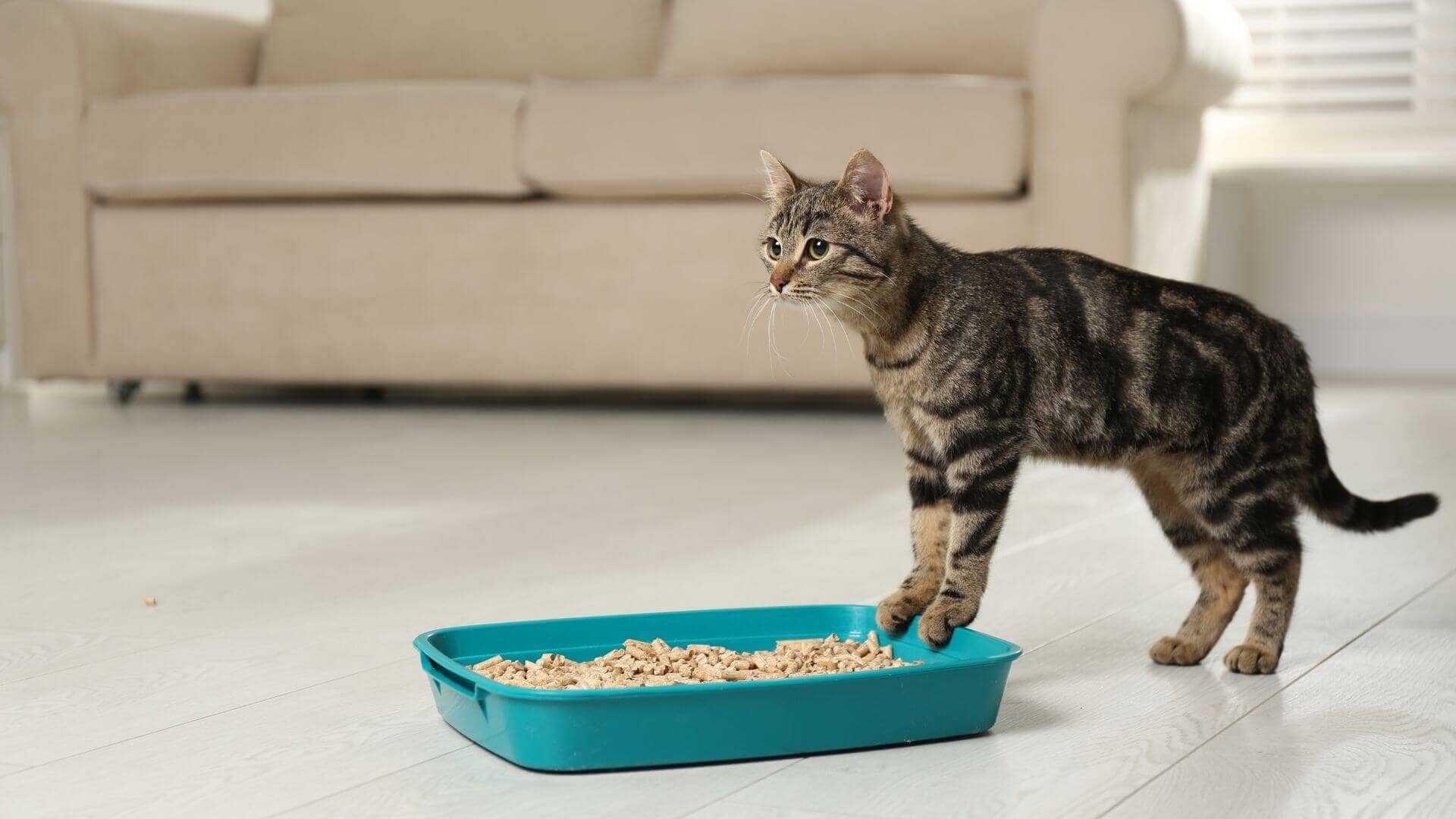can you flush cat litter?

There are many cat litter brands who have explicitly mentioned on their packaging that cat litters are suitable for flushing. But practically, can you flush cat litter? Where is there so much talking? Why the controversy?
Cat owners often wonder about the proper way to dispose of cat litter. While we understand it may be tempting to flush it down the toilet for your convenience, this practice comes with various considerations and potential risks.
In this post let’s find out whether you can flush the cat litter or not and the alternatives for responsible disposal.
Can you flush cat litter?
Technically speaking it is not advisable to flush cat litter and there are strong reasons behind why we should not. There are cat litter brands who come with a tag stating flushable and non flushable.
Flushable cat litters are designed to dissolve and disintegrate when exposed to moisture, making them suitable to flush down the toilet. They are basically made from natural materials like wood, paper, corn or wheat. These materials are biodegradable, that means they break down naturally over time, thus reducing environmental impact.
One of the primary advantages of flushable cat litter is convenience for cat owners. Pet owners can get rid of scooping, bagging and disposing of litter in the trash.On the other hand non flushable cat litter is made up of materials like clay, silica gel and crystals which form solid clumps when exposed to moisture which is not advisable to flush down the toilet.
The primary disposal method for non flushable cat litters is sealing used litter in a plastic bag and disposing of it in the trash. This approach prevents litter from entering water systems and causing environmental harm.
We shall discuss the litters that you can flush and litters that you cannot flush in details in the below section.
Types of cat litters you can flush
1.Clay Based Litters
2.Biodegradable litters
3.Silica Gel Litters
4.Septic-Safe Litters
5.Compostable Cat Litters
Compostable cat litters are typically made from natural and biodegradable materials. While you should avoid flushing cat waste due to potential health risks, you can compost the litter itself if it’s labeled as compostable. But you need to follow specific guidelines for composting cat litter to ensure safe decomposition.
We are very well aware that these cat litters are marked as flushable, but please remember there are still risks associated with this method of disposal. Therefore we advise it’s better not to flush the cat litter down the toilet.
Types of cat litters you can't flush
1.Clumping Clay Litter
2.Non Clumping Clay Litter
3.Crystalline Silica Litters
Why you cannot flush cat litter?
Regardless of whether the litter is flushable or non flushable, you should never flush it down the toilet. And it is backed with really strong reasons.
The first and foremost reason you cannot flush down the cat litter is because the poop of the cat contains single celled parasites which can cause toxoplasmosis. Once these parasites contaminate the sewage system, it can be extremely harmful.
Cat’s poop is considered to be harmful and most water treatment plants cannot purify it. The parasite Toxoplasma gondii, cannot be killed by any water treatment method or septic tanks. It not only affects marine ecosystems and water quality, but also affects human life. People with weak immune systems can be affected with serious health issues.Especially pregnant women can easily pass an infection to the new born baby with potentially harmful consequences to the child’s life.
Therefore you should be very careful handling pet waste and should not flush any pet waste down the toilet.
The second reason is cat litter contains an ingredient called bentonite which is a clay material. It has supposedly an ability to absorb upto 15 times its original weight. On flushing down the cat litters, it can swell up and block the sewer pipes.Clumps of cat litter can accumulate in pipes, leading to blockages and costly repairs. This is especially true if your home has older plumbing or septic systems. And clogged sewer pipes have a distressing issue, characterised by messiness and unpleasant odours thus possessing environmental risks and severe health hazards leading to infectious diseases.
What are the responsible cat litter disposal alternatives?
1.Trash Disposal
2.Composting
3.Pet waste disposal systems
4.Consult local regulations
conclusion
The idea of flushing cat litter down the toilet definitely seems appealing for its convenience, it comes with significant risks which we already went through. To ensure responsible waste management and to minimize adverse effects, its advisable to stick to established disposal methods such as bagging and trashing cat litter or exploring compostable and biodegradable alternatives. Let us all make an informed choice that balances convenience with environmental responsibility.
